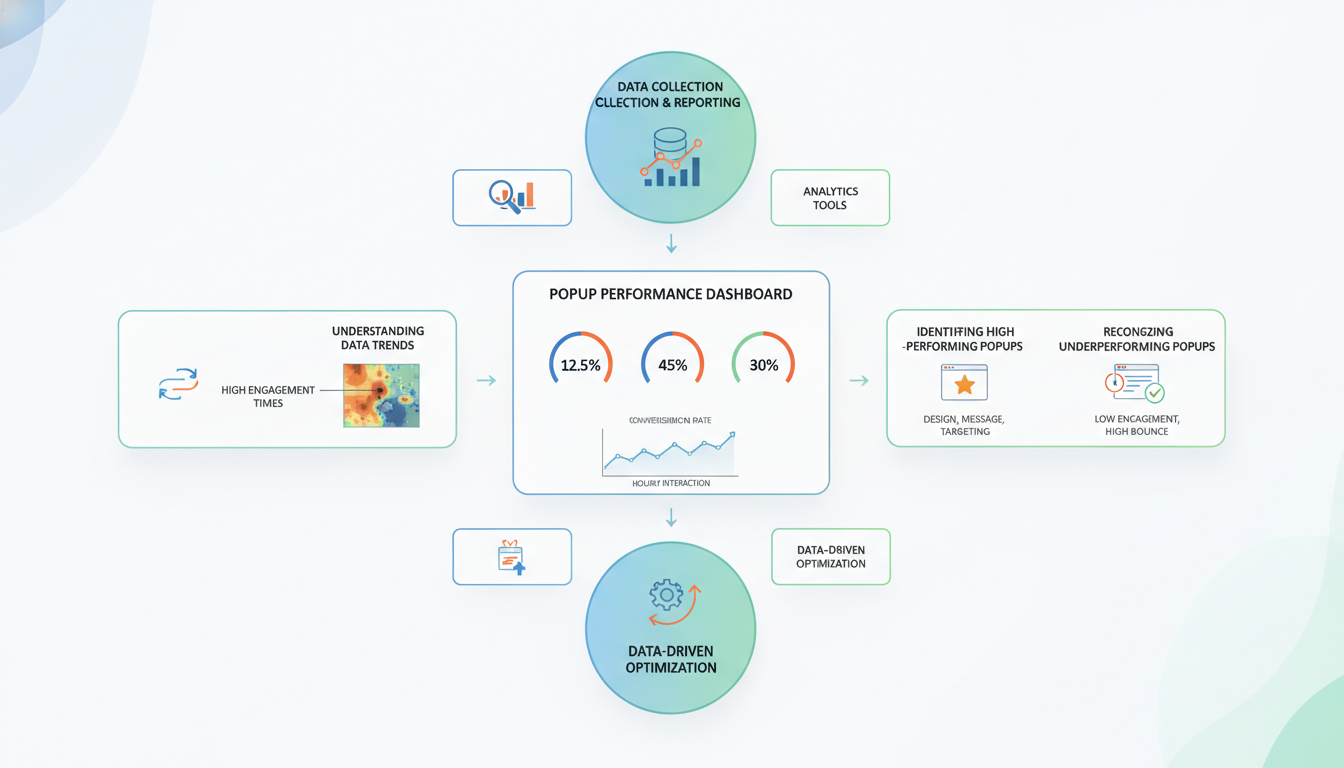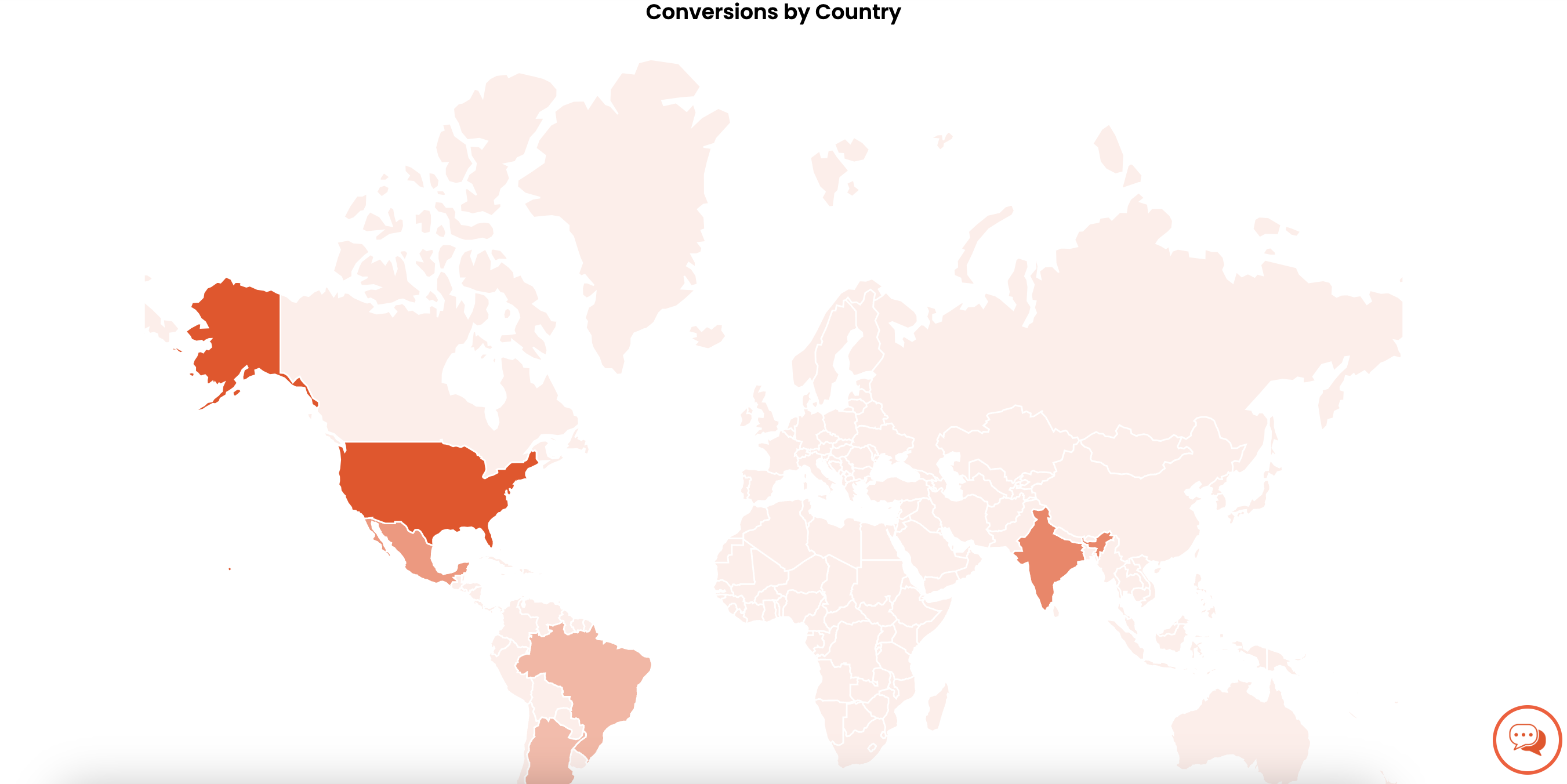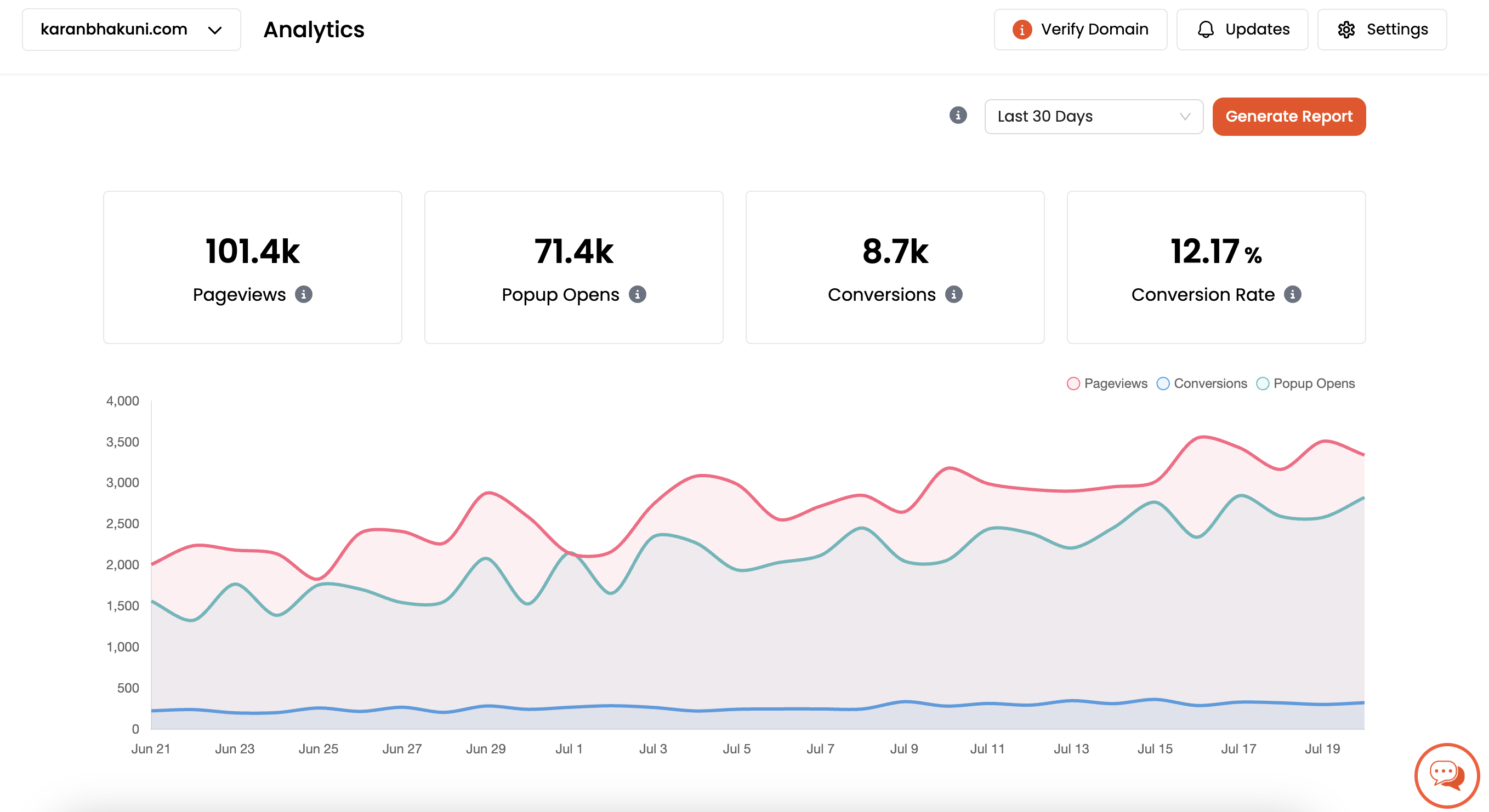Data is what you need to do analytics. Information is what you need to do business.
John Owen
In the fast-paced world of digital marketing, understanding user behavior is crucial for creating effective strategies. Popup analytics provide valuable insights into how visitors interact with your site, allowing you to optimize engagement and conversion rates. This article delves into the essentials of popup analytics, highlighting their importance and how they can transform your digital marketing efforts.
Popup analytics refer to the collection and analysis of data related to the performance and effectiveness of popups on a website. This includes tracking user interactions with popups, such as views, clicks, and conversions.
Understanding Popup Analytics
What is Popup Analytics?
Popup analytics involve tracking and analyzing data related to the performance of popups on your website. This includes measuring how often popups are displayed, how users interact with them, and the resulting actions taken, such as clicks and form submissions.
Key Metrics in Popup Analytics
To effectively measure and optimize popup performance, focus on the following key metrics:
Conversion Rate: The percentage of visitors who complete the desired action after seeing a popup.
Click-Through Rate (CTR): The percentage of visitors who click on the popup.
Bounce Rate: The percentage of visitors who leave the site after viewing the popup.
Time on Site: The amount of time visitors spend on your site after interacting with a popup.
Engagement Rate: The level of interaction users have with the popup, including clicks and form submissions.
Exit Rate: The percentage of visitors who leave the site after interacting with a popup.
How Popup Analytics Differ from General Website Analytics
While general website analytics provide a broad overview of user behavior across your entire site, popup analytics focus specifically on the performance of individual popups. This allows for more targeted optimization and a better understanding of how popups contribute to overall site goals.
Benefits of Popup Analytics

Improving User Engagement
Popup analytics help identify which popups are most effective at engaging users, allowing you to refine and enhance your strategies. By understanding what captures visitors' attention, you can create more compelling and relevant popups.
Increasing Conversion Rates
By analyzing how users interact with your popups, you can identify opportunities to improve conversion rates. Popup analytics reveal which designs, messages, and calls-to-action are most effective, enabling you to optimize for higher conversions.
Optimizing Popup Performance
Regularly monitoring popup performance through analytics allows you to make data-driven decisions. This ensures your popups are always performing at their best, providing the highest possible return on investment.
Identifying User Behavior Patterns
Popup analytics provide insights into user behavior patterns, such as when visitors are most likely to engage with a popup or what types of offers are most appealing. These insights can inform your overall marketing strategy and help you better meet user needs.
Enhancing Marketing Strategies
By leveraging popup analytics, you can enhance your overall marketing strategies. The data collected from popups can inform other areas of your marketing efforts, such as email campaigns, social media promotions, and content marketing.
Key Metrics to Track

Conversion Rate
Conversion rate is a critical metric that measures the percentage of visitors who complete the desired action after seeing a popup. A high conversion rate indicates that your popup is effectively driving user actions.
Click-Through Rate (CTR)
CTR measures the percentage of visitors who click on the popup. This metric helps determine the effectiveness of your popup's design, message, and call-to-action.
Bounce Rate
Bounce rate measures the percentage of visitors who leave your site after viewing the popup. A high bounce rate may indicate that the popup is not relevant or is disrupting the user experience.
Time on Site
Time on site measures how long visitors stay on your website after interacting with a popup. This metric provides insights into the overall engagement and effectiveness of the popup.
Engagement Rate
Engagement rate measures the level of interaction users have with the popup. This includes clicks, form submissions, and other interactions that indicate user interest.
Exit Rate
Exit rate measures the percentage of visitors who leave the site after interacting with a popup. This metric can help identify issues with the popup's timing, relevance, or design.
Analyzing Popup Performance

Data Collection and Reporting
Collecting and reporting data is the first step in analyzing popup performance. Use analytics tools to gather data on key metrics and generate reports that provide insights into how your popups are performing.
Understanding Data Trends
Identifying and understanding data trends is crucial for optimizing popup performance. Look for patterns in the data, such as which popups have the highest conversion rates or which times of day see the most engagement.
Identifying High-Performing Popups
Identifying high-performing popups allows you to replicate their success. Analyze the elements that contribute to their performance, such as design, messaging, and targeting, and apply these insights to other popups.
Recognizing Underperforming Popups
Recognizing underperforming popups is essential for continuous improvement. Identify popups that have low engagement or high bounce rates, and make data-driven changes to improve their effectiveness.
A/B Testing for Popups

Importance of A/B Testing in Popup Analytics
A/B testing is a powerful tool for optimizing popups. By testing different variations of a popup, you can determine which elements perform best and make informed decisions about what changes to implement.
Setting Up A/B Tests
Setting up A/B tests involves creating different versions of a popup and randomly showing them to visitors. Track the performance of each version to see which one performs better.
Analyzing A/B Test Results
Analyzing A/B test results provides insights into which popup elements are most effective. Look at metrics like conversion rate, CTR, and engagement rate to determine the winning version.
Optimizing Popups Based on Test Results
Use the insights gained from A/B testing to optimize your popups. Implement the changes that led to better performance and continue testing to further refine your strategy.
Best Practices for Popup Analytics

Regular Monitoring and Reporting
Regularly monitor and report on your popup analytics to stay informed about performance trends and identify areas for improvement. Consistent analysis helps ensure your popups remain effective.
Continuous Optimization
Continuously optimize your popups based on analytics insights. Make data-driven changes to improve engagement, conversion rates, and overall performance.
Aligning Popups with Business Goals
Ensure your popups align with your business goals. Use analytics to track how well your popups support your objectives, such as lead generation, sales, or brand awareness.
Staying Updated with Analytics Trends
Stay updated with the latest trends in analytics. Keep an eye on new tools, techniques, and best practices to ensure your popup strategy remains cutting-edge.
Future Trends in Popup Analytics

AI and Machine Learning Integration
AI and machine learning are transforming popup analytics. These technologies enable more advanced data analysis and personalized popup experiences.
Real-Time Analytics
Real-time analytics provide immediate insights into popup performance. This allows for quicker adjustments and more responsive optimization.
Enhanced Personalization
Enhanced personalization through advanced analytics helps create more relevant and engaging popups. Use data to tailor popups to individual user preferences and behaviors.
Voice and Gesture Analytics
Voice and gesture analytics are emerging trends that offer new ways to interact with popups. These technologies provide innovative opportunities for engaging users.
Leveraging Poper for Popup Analytics

Overview of Poper’s Analytics Features

Poper offers comprehensive analytics features that help you track and optimize your popups. From conversion rates to user engagement, Poper provides the data you need to succeed.
Integrating Poper with Your Website
Integrating Poper with your website is straightforward. Use Poper’s easy-to-install tracking codes and seamless integration options to start collecting data right away.
Real-Time Data and Reporting with Poper
Poper provides real-time data and reporting. Monitor your popup performance as it happens and make timely adjustments to optimize results.
FAQs
What are the most important metrics in popup analytics?
The most important metrics include conversion rate, click-through rate (CTR), bounce rate, time on site, engagement rate, and exit rate.
How can I improve my popup conversion rates?
Improve your popup conversion rates by optimizing design, messaging, and targeting. Use A/B testing to identify the most effective elements.
How can A/B testing improve popup performance?
A/B testing allows you to compare different versions of a popup and identify which elements perform best. This helps you make data-driven decisions to optimize performance.
What are the future trends in popup analytics?
Future trends in popup analytics include AI and machine learning integration, real-time analytics, enhanced personalization, and voice and gesture analytics.
Summary
In this article, we explored the importance of popup analytics, key metrics to track, benefits, best practices, and advanced techniques. We also highlighted how Poper can help you leverage these insights for better engagement and higher conversions.
Popup analytics are essential for optimizing your digital marketing strategy. By understanding and applying the insights gained from analytics, you can create more effective popups that drive user engagement and conversions.




